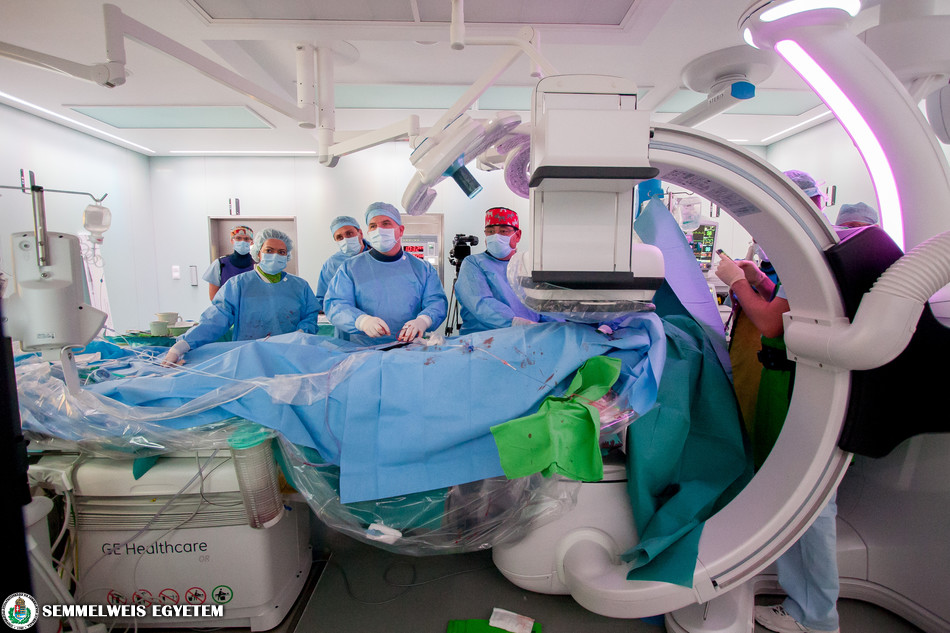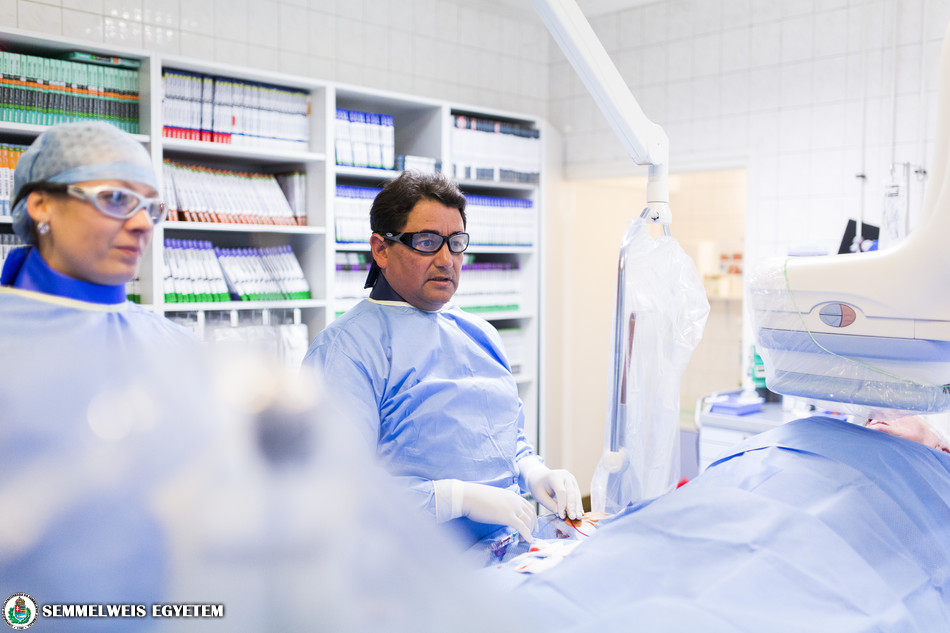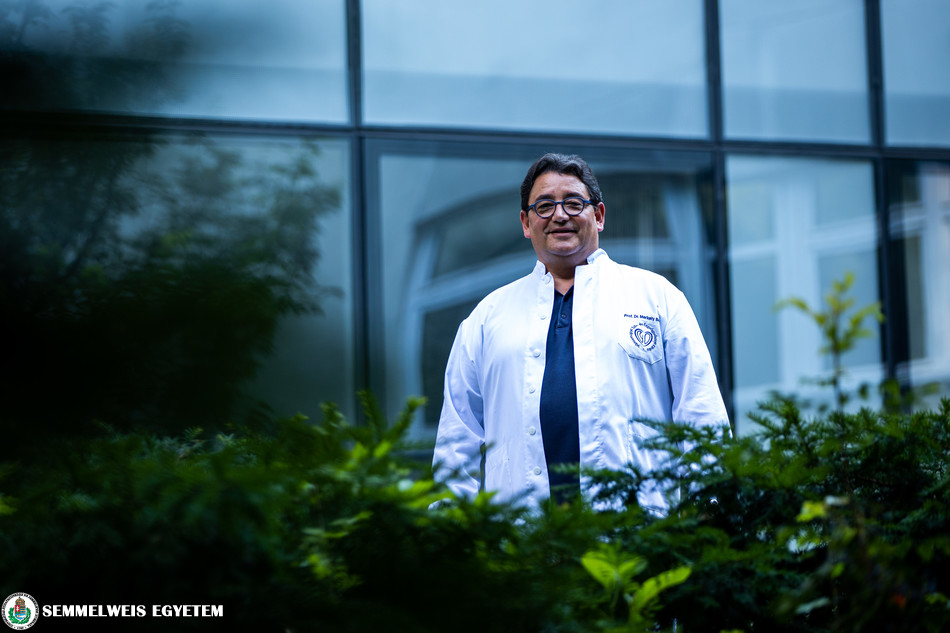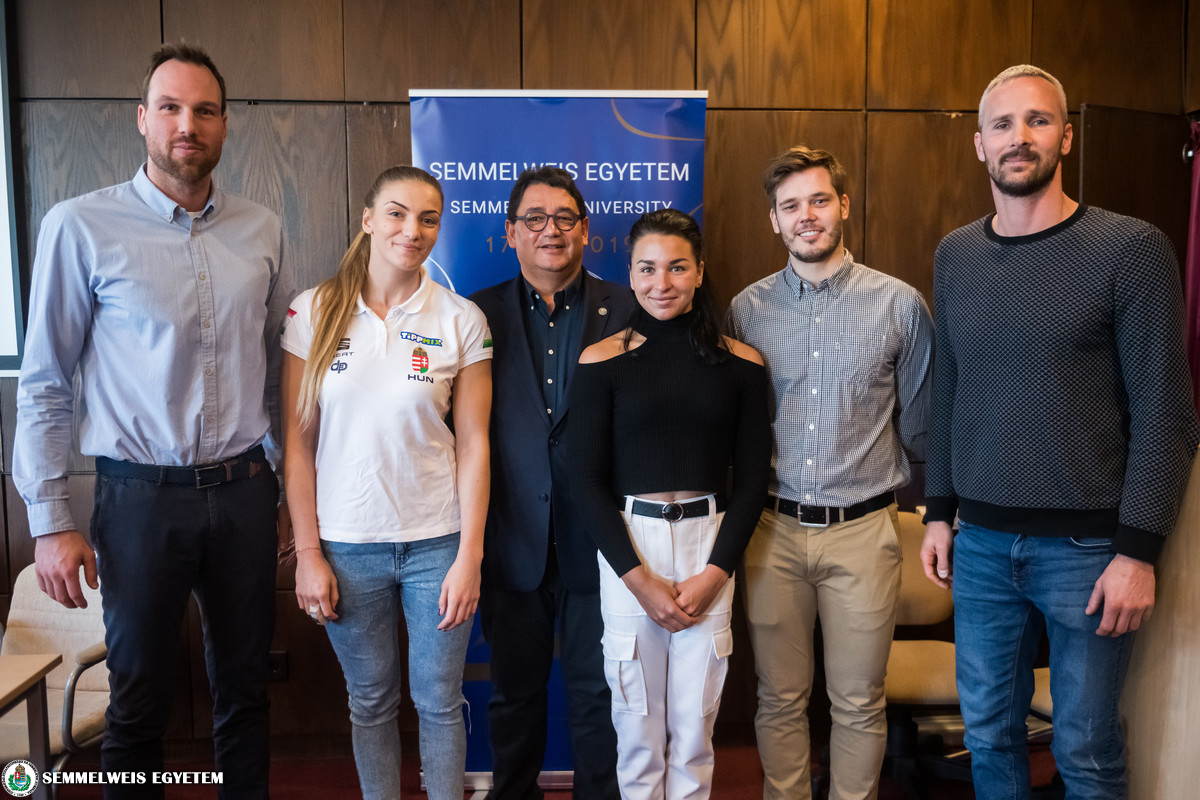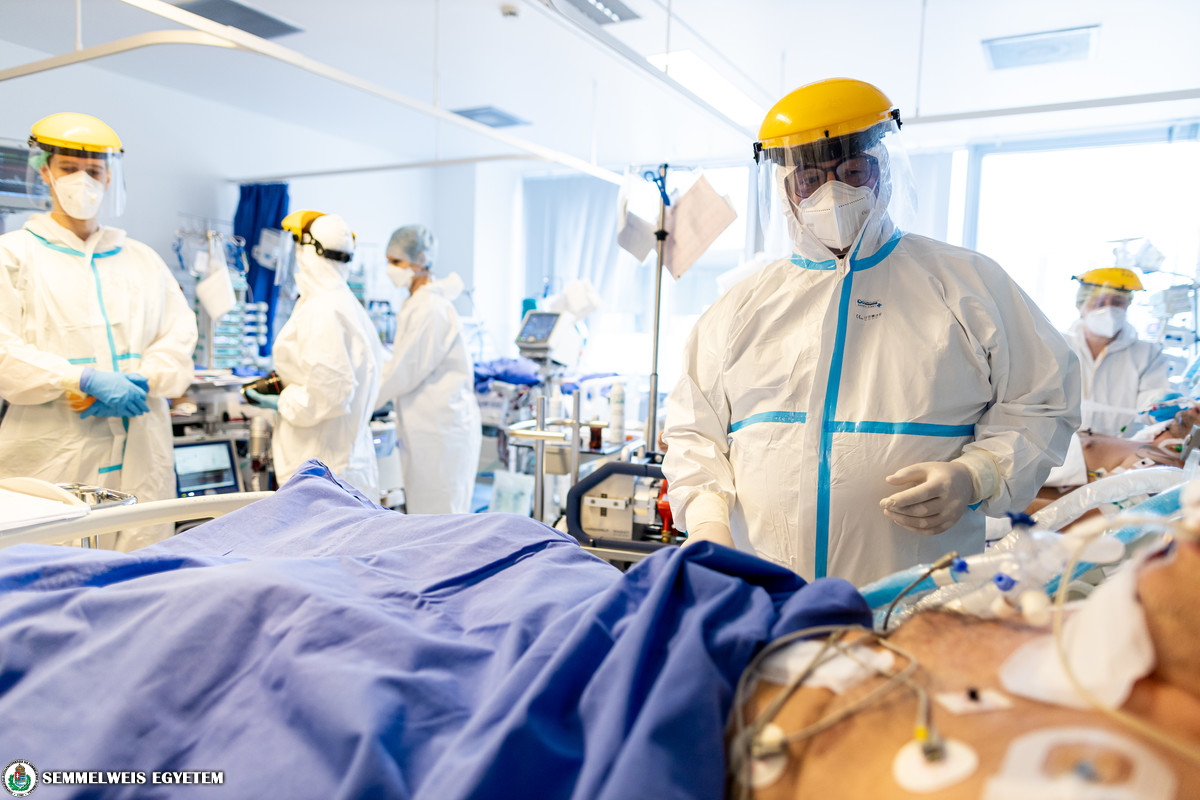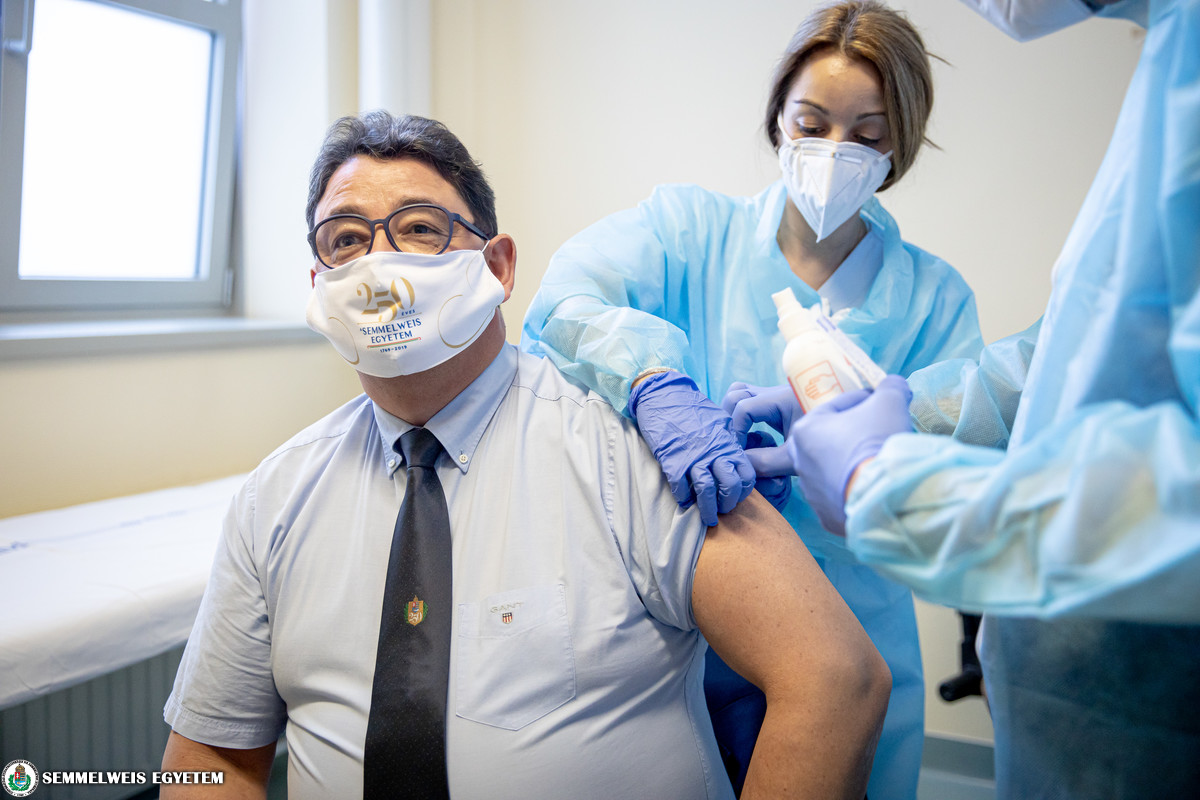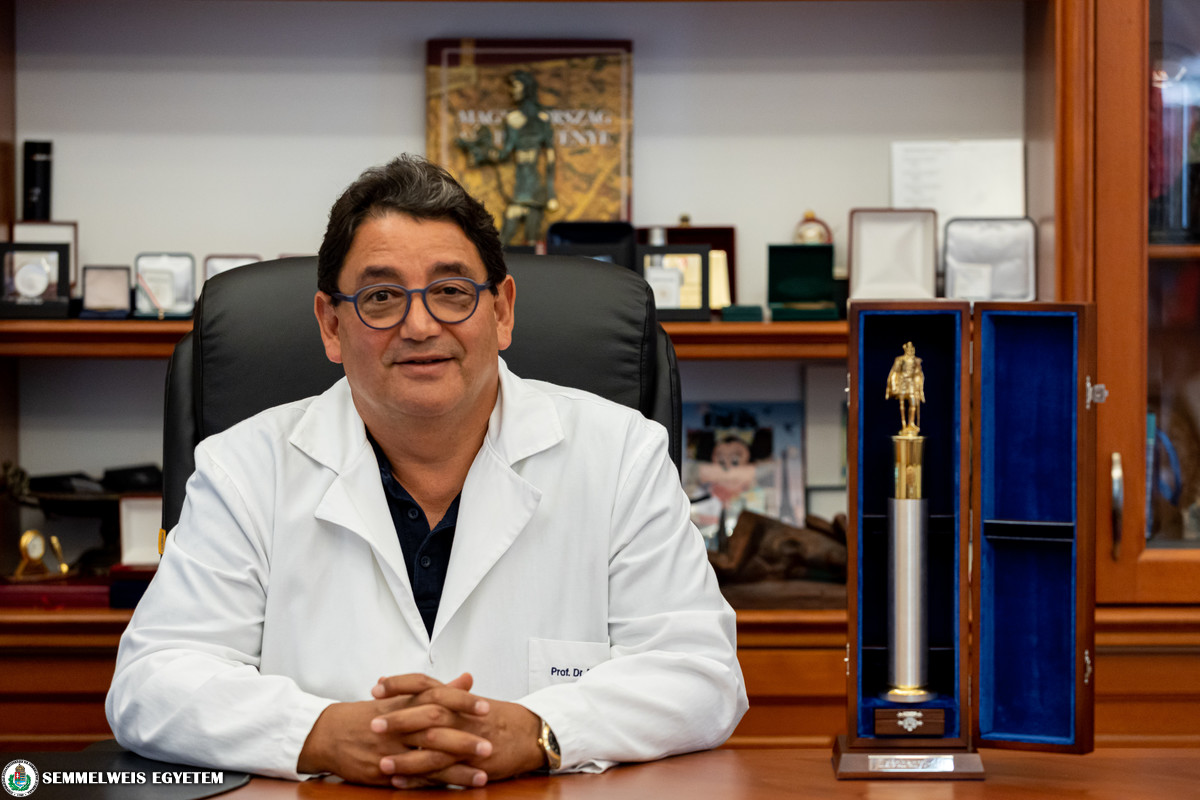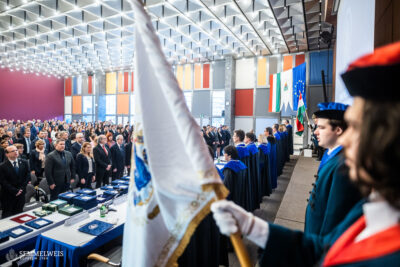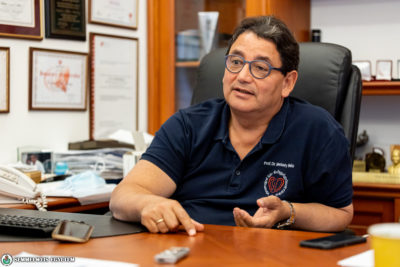 “Two key figures in my career – Dr. Zoltán Szabó, who planned and performed the first Hungarian heart transplantation, and Dr. Sándor Juhász-Nagy, the leading circulatory researcher of his time – were also Széchenyi Prize-winning professors here at the Városmajor Heart and Vascular Center. It is a fantastic and uplifting feeling to be joining them,” said Dr. Béla Merkely, rector of Semmelweis University and director of the center, in connection with the fact that he himself received this award on August 20, 2021. He was awarded the prize in March in recognition of his exceptionally valuable scientific career, his internationally acclaimed cardiological research achievements, his dedicated teaching work and his outstandingly effective institutional management and professional public activities, but due to the coronavirus epidemic he received it on the occasion of the national holiday of August 20.
“Two key figures in my career – Dr. Zoltán Szabó, who planned and performed the first Hungarian heart transplantation, and Dr. Sándor Juhász-Nagy, the leading circulatory researcher of his time – were also Széchenyi Prize-winning professors here at the Városmajor Heart and Vascular Center. It is a fantastic and uplifting feeling to be joining them,” said Dr. Béla Merkely, rector of Semmelweis University and director of the center, in connection with the fact that he himself received this award on August 20, 2021. He was awarded the prize in March in recognition of his exceptionally valuable scientific career, his internationally acclaimed cardiological research achievements, his dedicated teaching work and his outstandingly effective institutional management and professional public activities, but due to the coronavirus epidemic he received it on the occasion of the national holiday of August 20.
The rector recalled that thirty years ago, Dr. Zoltán Szabó – the director of the institution at the time – hired him to the clinic, and from then until his death six years ago, he accompanied him daily and weekly throughout his career. “I respected him as if he were my father, and from the beginning we had a close relationship of trust, because he sensed that I was interested and that if I took on something, I would do it. He saw prospects in me and gave me the opportunity to develop,” he recalled. In addition to his clinical approach, Dr. Zoltán Szabó taught him a lot about being a good leader. “He was a managerial person, who focused on the essentials, not the details. He had a vision, he always had a forward-looking goal in mind, and he was always building,” the rector pointed out.
As a young doctor, Dr. Béla Merkely developed pacemakers, implantable defibrillators and radiofrequency ablation devices in the Research Laboratory of the clinic, headed at the time by Dr. Sándor Juhász-Nagy.
“He was a thorough, structured thinker, full of ideas, a unique personality who not only taught me how to build a research project with integrity, but also prepared me to endure successes and failures. Under his leadership, the lab – which has now grown several times in volume – was able to produce truly translational research,” he recalled about another important mentor.
In 2006, Dr. Béla Merkely was recommended by Dr. Sándor Juhász-Nagy to the then rector to head the Department of Cardiology, while retaining the management of the Cardiovascular Center (CVC), emphasizing that he saw in him the guarantee for the provision of high-quality cardiology education. He justified his decision not only on the basis of his research results, but also on the basis of his “extraordinary intensity and effectiveness of his therapeutic activities, his exemplary commitment to his patients, his excellent organizational skills and his inspirational power over his young staff,” said Dr. Sándor Juhász-Nagy in his letter of the time, which he wrote to rector Dr. Tivadar Tulassay as a recommendation.
Among his influential mentors, he also mentioned Professor József Tenczer, who taught cardiology as head of internal medicine at the 3rd Department of Internal Medicine, where Béla Merkely worked as a coronary care nurse for one and a half years. As to how he later chose Városmajor as a graduate doctor, he said that during his fellowship in Heidelberg it became clear to him that interventional cardiology would define this specialty in the future, and within the university it was clear that Városmajor could be the cradle of this specialty, which is why he asked Dr. Attila Fonyó, the then dean, to allow him to come here. “You have to be able to make good choices,” he noted.
When he arrived exactly 30 years ago, in 1991, there were four cardiologists in the building, and the development of the field and the clinic is reflected in the fact that today the number of cardiologists is 60, but there are also significantly more cardiac surgeons, vascular surgeons, anesthesiologists and young PhD students.
30 years as a doctor, 30 years in Városmajor
Dr. Béla Merkely was born in 1966 in Budapest. He graduated as a general practitioner from Semmelweis University of Medicine in 1991, and obtained his PhD in 1999. He habilitated in 2006 and has been a doctor of the Hungarian Academy of Sciences since that year. Married, father of three children. He started his career 30 years ago at Semmelweis University’s Városmajor Clinic, where he has been involved in research on the mechanisms of life-threatening arrhythmias, and later on in the development of new, modern minimally invasive devices, different ablation methods to treat arrhythmias, such as the optimization of defibrillators, implantable and external defibrillators. He obtained his PhD in 2006 on the pathomechanisms of tachyarrhythmias and new electrophysiological non-pharmacological treatments. Later on, heart failure became the focus of his work, with over 100 publications out of 750 on resynchronization therapy, which is all about how to align the four weakened heart cavities to work optimally and restore the heart’s function. He has conducted mainly clinical studies on the treatment of acute myocardial infarction. An important development is the development of a sports cardiology profile, which, among other things, focuses on optimizing athlete performance and determining the cardiovascular risk of athletes. Currently, his focus is on structural interventions, valve implantation and minimally invasive implantation.
“At the Városmajor clinic, we can perform all the operations known in cardiovascular medicine to a high standard, and we perform the largest number of all of them in Hungary. In terms of heart transplantation, we have the second largest transplantation program in Europe, the number of pacemaker implantations has increased from 200-300 to 1,500-1,800 in recent decades, and the number of interventional procedures from around 300 to 2,500. The clinic has 2 CT scanners and an MRI scanner, and significant infrastructural developments are underway, with the operating theaters being modernized and the educational space being expanded with a HUF 3 billion investment,” said Dr. Béla Merkely.
“Step by step, we have been moving in the right direction, and successes have always brought new funding, research grants, so we have been able to raise funds while maximizing international relations,” he said, giving an insight into the clinic’s operations, pointing out that he has a similar approach to running the university. “There is one aspect: professionalism in all areas. But we also need to have a clear vision of where we want to go and follow that every step of the way,” he pointed out. He stressed the importance of human resources, saying, “We only recruit the best people to the clinic and it is very important to have the best people at the forefront in all areas. I have professors who started as research students at the center – this shows that talent management is the basis for developing the human resources of the university.”
Dr Béla Merkely says that patient care is where he draws the dynamism and recharge he needs for his institutional development activities. “When I walk into the operating theater, I feel as good as I do at a water polo match. In water polo, I focus on the ball game and my teammates, and in the operating room, I focus on the patient. Then all the difficulties of other tasks disappear,” he adds. And what gives motivation to institutional development, whether for the center or the university? “I have a vision and I know where we want to go,” he stresses, adding that he retains this approach from his childhood swimming training. “As we swam the thousands of meters – we had to swim 100 kilometers a month – we knew it was a long way to go, but it was necessary to improve on the seconds and perform better in the next race. I learned that you need a clear goal and the road to get there can be long and tiring, so it takes strength,” he said.
Dr. Béla Merkely also said that the fight against the COVID-19 pandemic has shown that although a doctor can cure many people with their own hands, perhaps many more can be helped by a well-organized system in a critical situation.
The seriousness of the situation demanded that we rise to the challenge with our best efforts, and through conscious development we have been at the forefront of the task at the national level for the benefit of our nation
– Dr. Béla Merkely said, adding that an unprecedented cooperation has developed within Semmelweis University, but also between the four medical universities.
Dr. Béla Merkely says that medicine is a 24-hour job, but it is one of the most beautiful professions. From his three children, his grown-up son and daughter have chosen this career, and now his youngest child is also determined that there is no other profession but medicine. “It’s a great feeling to experience when our children see that the profession we have chosen gives us an uplifting, lifelong job.”
Pálma Dobozi
Translation: Tamás Deme
Photo: Attila Kovács – Semmelweis University

